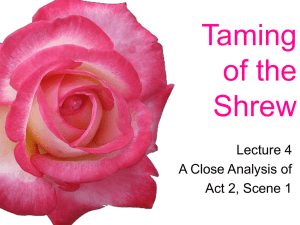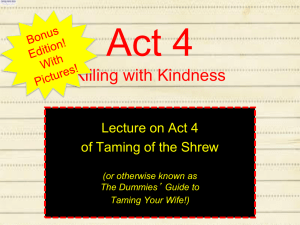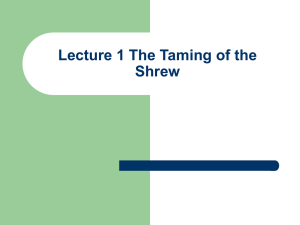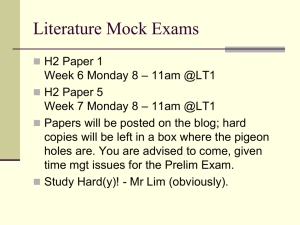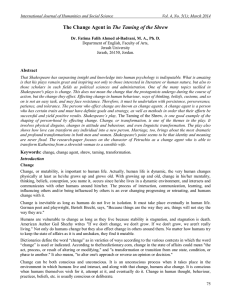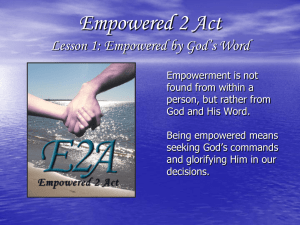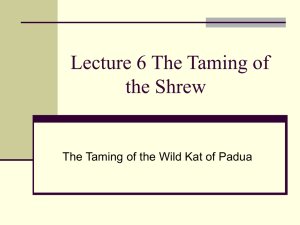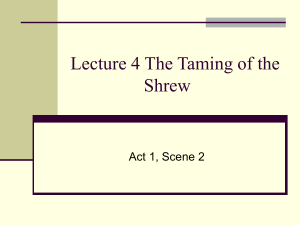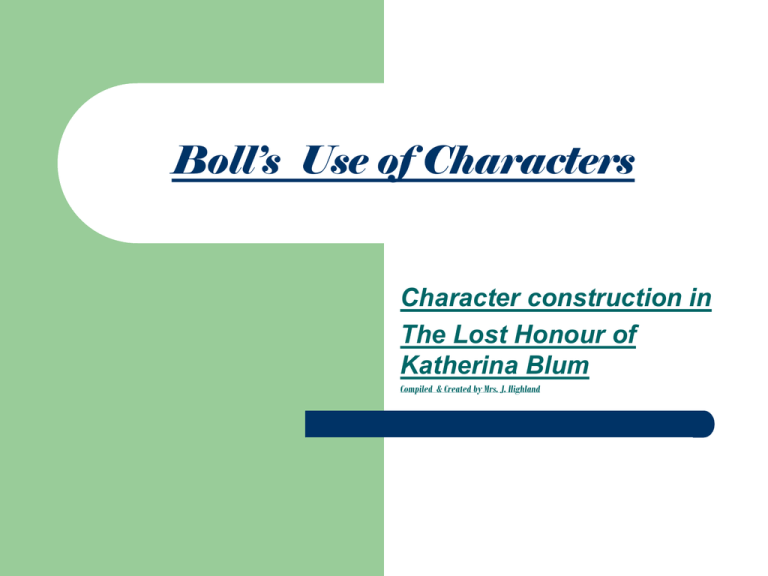
Boll’s Use of Characters
Character construction in
The Lost Honour of
Katherina Blum
Compiled & Created by Mrs. J. Highland
Function of Characterisation
Characterisation is not random –
clearly enunciates/articulates specific
beliefs values and attitudes of
particular contexts to either challenge
or reinforce dominant cultural norms.
Boll’s use of characters
Boll uses characters to portray problems of the time – eg
corruption of institutions, abuse of power, culpability of social
institutions in the destruction of the individual, the salacious power of the
tabloid press, empowerment of patriarchal system
Another social problem – ever increasing gulf between the
small wealthy and powerful elites and the institutions that
collude with them – and the attendant social alienation of a
particular group-especially the working class
Straubleder/Hach/Biezemenne
Moral and spiritual vacuum in West German social values –
deterioration of institutions like family, work place, neighbourhoods under onslaught of individualism and
materialism and power
The hollow promise of the Reconstruction
Boll’s characters serve as a
barometer of the social values of
German society
Uses characters to represent the values
and attitudes of the time – eg
Katherina – values of independence
and upward social mobility, Ludwig
Gotten – criminal underclass.
Working class as victims of rich –
Katherina – victims of Straubleder’s
impulses,
Gendered beliefs – Dominant &
disempowered masculinities
Uses Characters to interrogate traditional notions of
patriarchy and gender empowerment/disempowerment
–
Males are empowered by social values.
Hold all positions of authority –Biezermenne, Hach &
Moeding – Police Commissioner, Public Prosecutor
and for the Justice Department, Blorna is an
independently wealthy solicitor. Straubleder is a
wealthy businessman, a millionaire – active in the
world of business and finance and Totges is an
influential journalist capable of manipulating public
opinion through the News
Male empowerment
Make all decisions outside the domestic
sphere and even within the home
Regarding interrogation, arrest, conduct of trial eg incident with the dessert
Travel freely in the community
Straubleder conducts business affairs, attends conferences. Pursues even reluctant
women. While Katherina has to go on long lonely drives in the rain to escape
unwanted male advances
Control all financial resources
Buy silence and compliance,
Marginalised men
Represented as victims - Gotten
Little power over their lives
Duped and exploited by powerful men
Ineffectual in dealings with other men
Command little respect
Low social status
Marginalised Females
–
Females restrained by social values –
expectations and assumptions about their
roles and sphere of influence.
Concerning place – authority in the home is
idealized by patriarchy but little or no authority
outside the home – even over decisions about
marriage, relationships with males. Eg. Katherina
challenges patriarchy with her independence
Females are
Restrained by social expectations concerning
roles – eg Katherina’s divorce and subsequent financial solvency
challenges male power
Concerning sex – females represented as
passive, idealized essentially useless
ornaments or as predatory harpies unable to
change the realities of their lives unless they
are attached to dominant males. Eg Katherina’s divorce
leaves her open to innuendo regarding moral values and conduct – the gentlemen
callers
Female disempowerment
Locked out of major decisions –
Trude Blorna is not privileged in Straubleder’s confidences
Given no chance to safeguard financial autonomy
Katherina’s independence is systematically dismantled by lies and innuendo which results in the
loss of her apartment
Constructed by male gaze – judged on beauty and sex
appeal to males.
Katherina is pursued by the tabloid press, photographed and castigated in the News for her divorce,
her ‘gentlemen callers’ and her honour destroyed
Boll uses characters to challenge
reader expectation
Uses characters in opposition to direct
reader response – eg Katherina is not judged by her
frugality, her strong work ethic, her honesty and her independence but
as a victim of the wealthy and the powerful like Straubleder.
Biezemenne and Totges who destroy her credibility and her reputation,
causing her deterioration into criminal action
Links characters to social
hierarchies
Characters uphold existing power structures and and social
hierarchy
Straubleder and Luding – empowered by wealth and privilege
Katherina– aspirational – works to get into this world
Gotthem – underclass – criminal
Blorna and Hach – solid middle class, empowered by education and position in the justice department
Characters serve as a potent force capable of challenging and
transforming social attitudes and values.
Use of intrusive narrator – elicits sympathy for Jatherina’s plight
Biezemenne and police department condemned as corrupt even though they hold positions of power–
undermines New German class structure
Some empowered by wealth
Characters present insights into notions of class, social
institutions and power relations operating American
society
– empowered by criminal connections – draws Gatsby into the underworld
The narrator , Trude Blorna and Else Woltershiem – observers of exercise and abuse of power
Totges and – empowered by mass media and the
Characters represent different classes of people
Give examples
Shows working class as victims
of wealthy groups
Representation of the working class
Obsequious – attempt to placate
wealthy – police authorities
Internalise the values of the dominant
class - Biezemenne
Aspire to wealth and status
Characters challenge the power
relations of the text
Serve as triggers in the central activity of
deconstructing a text so that the underlying
logic of power relations is revealed
Katherina’s act of shooting Totges
Totges reports of the Blorna’s and Trude’s character
Narrator calls on readers to challenge
oppressive beliefs and values which are
promoted. Eg class stratification which breeds inequities, exercise of
patriarchal power
Characters connected to symbols
Links characters to symbols and symbols to
characters – eg
Setting –
The puddle – shows the convolutions of truth, the distortion of facts and the cover
ups that result in injustice and victimisation
Katherina– associated with nun symbolism
The ring
The key
Psychological grounding of
characters
Characters can be used by readers to
explore psychological states eg Katherina’s growth and development into an independent woman,
throwing off the shackles of her past, affirmation of women,
Strubleder’s obsession with Katherina , Biezemenne and Totges’ sordid
discourse
Ideological use of characters
Links characters to state of society – eg
prevailing ideologies of the time – The New
Germany , capitalism & materialism, restless pursuit of power and
domination, corruption of institutions of family, church, justice – sub
title -
Themes and issues
Uses characters to present themes and
issues –
the value of individual vs social responsibility.
Other themes?
Conclusion
Therefore:
Characterisation is not random – serves
specific purpose in the context of texts –
examining existing power and social
structures and often foregrounding the
author’s own beliefs, values and
attitudes to his society.
That’s all folks!

